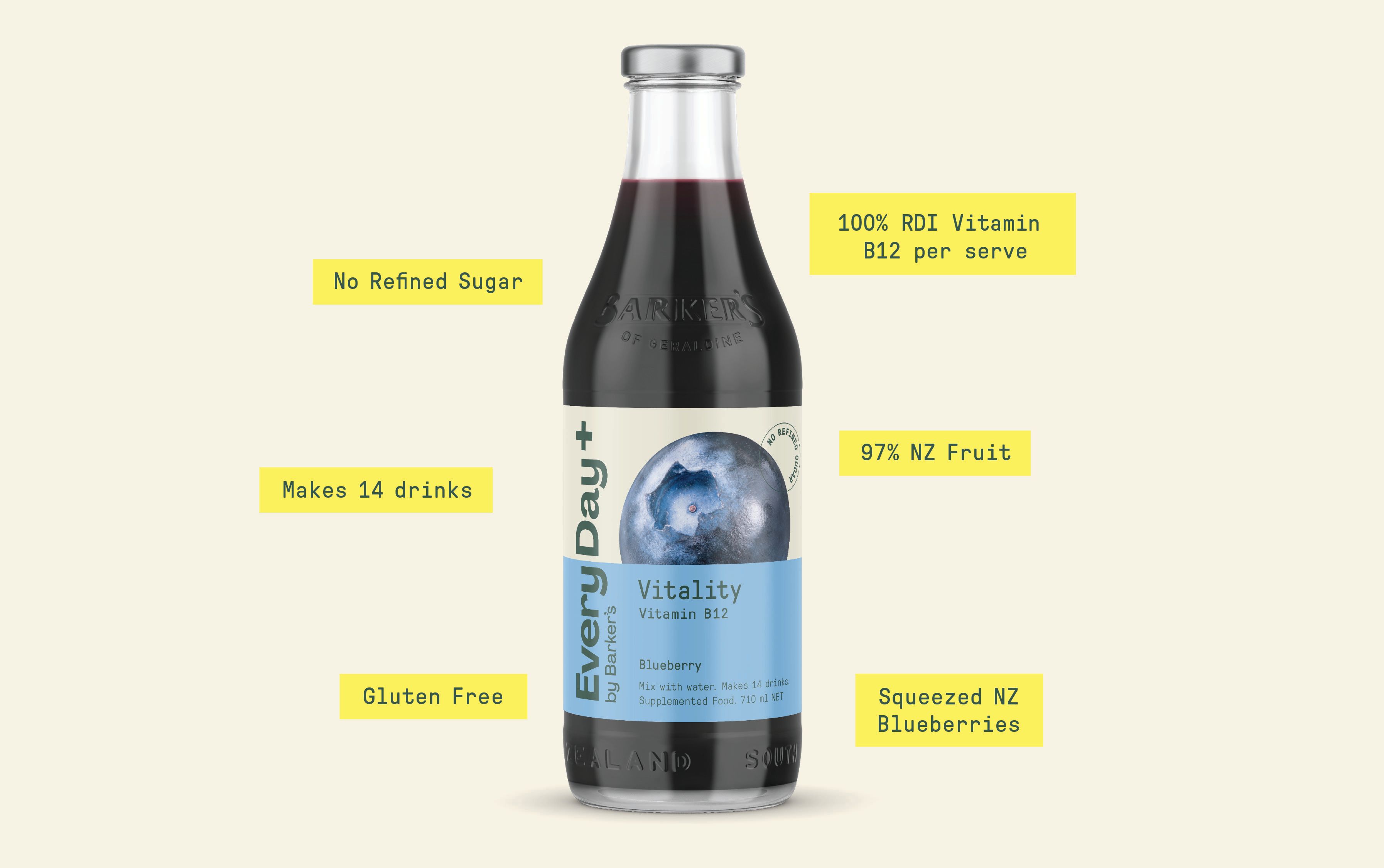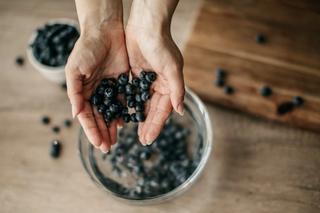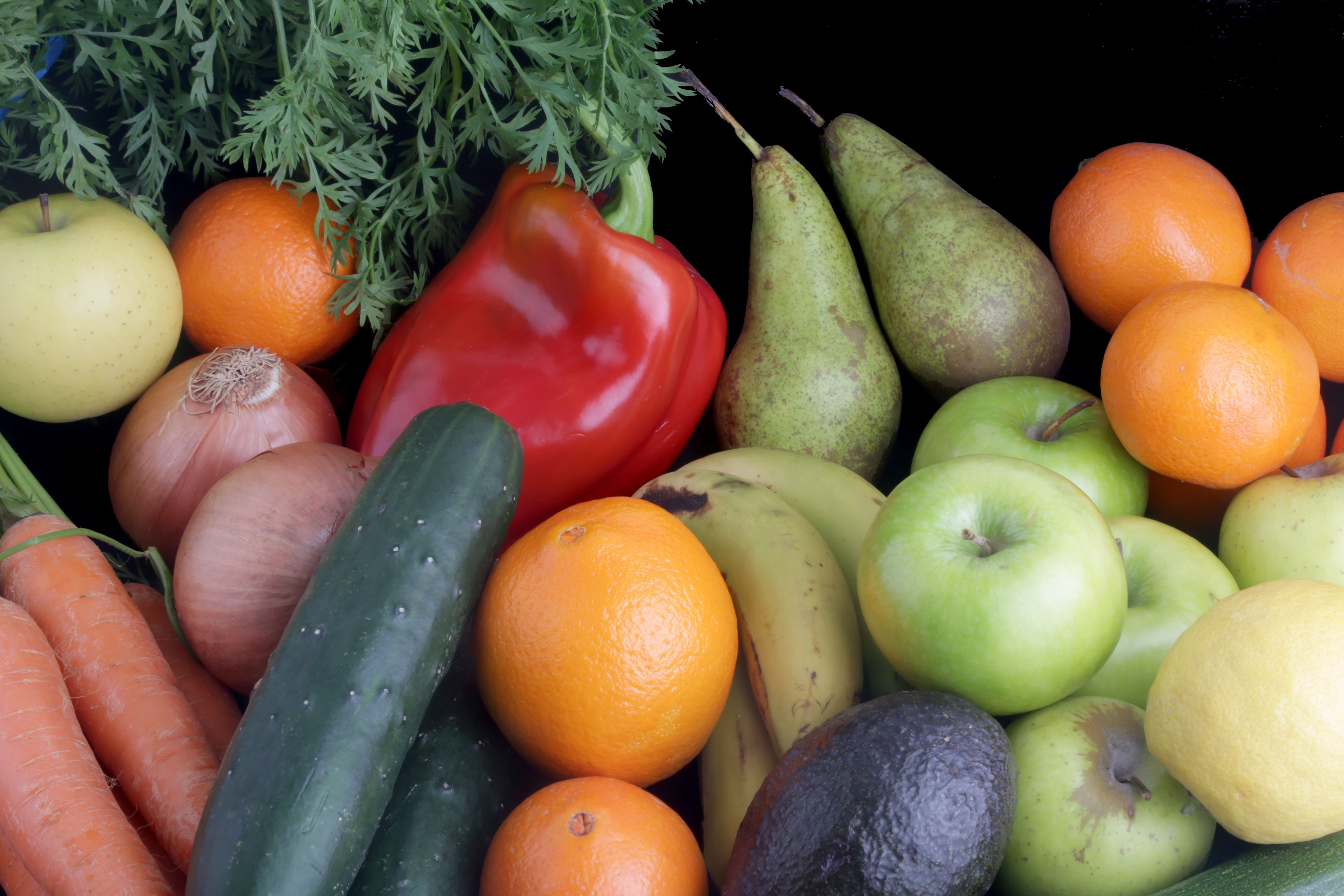Eat the Rainbow: why the variety of fruit and veg you consume matters
2025-04-23

Fruit and vegetables are necessary to the human diet for many reasons. You may have heard the phrase “eat the rainbow” when referring to eating a variety of fruit and veg. This is because different plant foods contain different benefits for the human body, coming from the phytonutrients (also known as phytochemicals) within them (McManus, 2019). Different plant foods also contain multiple types of phytonutrients.
The term “plant foods” encompasses fruit, vegetables, grains, legumes, herbs, tea, coffee, nuts and seeds (Sommer, 2024). The first half of the term, “phyto” is the Greek word for “plant”. Essentially, we’re discussing the nutrients you can get from plants.
Phytonutrients keep plants healthy. Some attract pollination, while others protect against bugs, fungi and environmental threats. When these plant foods are ingested by humans, anti-inflammatory properties of phytonutrients prove to be beneficial to us in different ways (Martin, 2024).
At this stage there are no known diseases that result from a deficiency of phytonutrients, but some phytonutrients have been shown to aid to protect against diseases (Murray, 2022).
Researchers estimate that there are more than 5,000 types of phytonutrients, and more than 25,000 individual phytonutrients (Martin, 2024). These are also what gives each fruit or vegetable its individual colour and taste. There is overlap in the health benefits that different phytonutrients bring.
In this article, we highlight some of the more common types of phytonutrients, what they do for us and which plant-foods they come from.
1. Flavonoids for exercise recovery
You may have noticed that we’ve added “Polyphenols” to the nutrition panel on both our Blackadder Blackcurrant, and Blackcurrant & Boysenberry Immunity Syrups.
Polyphenols belong to the flavonoid group of phytonutrients found in red, pink, blue and purple coloured fruit like cherries, berries and plums (Monjotin et al., 2022). Blackcurrants contain powerful polyphenols called anthocyanins (Plant & Food Research, 2021). The antioxidant and anti-inflammatory properties of anthocyanins aid the immune system, exercise recovery, and support cardiovascular health (Cleveland Clinic, 2023).
A 2020 study published in ‘Frontiers in Nutrition’ examined the impact of daily consumption extract from New Zealand blackcurrants on exercise recovery. Over a five-week period, participants were randomly assigned to receive either the blackcurrant extract or a placebo. The findings revealed that those who consumed the blackcurrant extract experienced a significant reduction in exercise-induced oxidative stress and inflammation (Hurst et al., 2020). Read the full study here.
For more information and studies on the benefits of anthocyanins on immunity and cardiovascular health, visit our Blackcurrants for Immunity article and our Blackcurrants for Cardiovascular health article.
2. Carotenoids for eye health
Carotenoids act as antioxidants (Weaver, 2018). Antioxidants boost your immune system by protecting against free radicals that break down your cells over time.
Alpha-carotene, beta-carotene, lycopene, lutein and zeaxanthin are all carotenoids. Typically, they give their plants a yellow, orange red or purple pigmentation (Maoka, 2019). Carrots, spinach, tomatoes, squash and sweet potatoes are all rich in carotenoids (Monjotin et al., 2022).
Carrots contain the carotenoids, alpha-carotene and beta-carotene, which when digested and converted to Vitamin A, are important for healthy eyes and good eyesight (Weaver, 2018). According to the World Health Organisation, night blindness is one of the first signs of a vitamin A deficiency. When this deficiency is severe, the cornea of the eye becomes very dry, and incurs damage along with the retina (WHO, 2009). While eating carrots won’t help you see in the dark, like the old wives’ tale suggests, there may be some truth behind this (Weaver, 2018).
3. Glucosinolates for detoxification
As we interact with increased amounts of free radicals, toxins and pollution daily, it’s important to maintain a functional detoxification system. Glucosinolates have been linked to support detoxification in the body (Yoshida et al., 2015). Cruciferous vegetables, for example rocket, broccoli, cauliflower, brussels sprouts, kale and cabbage, contain Glucosinolates (Higdon, Drake & Delage, 2005). When ingested, the glucosinolates are broken down into isothiocyanates, among other compounds. These isothiocyanates, particularly sulforaphane is thought to aid the body’s detoxification pathways by boosting the production of detoxifying enzymes and protecting the liver (Higdon et al., 2005).
A study on rats in 2015 published in the ‘World Journal of Gastroenterology’ found that feeding them broccoli sprout extract for 10 days increased the activity of genes that help with the detoxification in the liver (Yoshida et al., 2015). The study concluded that while human trials would need to be conducted to confirm, the sulforaphane in broccoli sprouts may support the body’s natural detoxification pathways. Read the study here.
4. Phytoestrogens for hormone replacement
Phytoestrogens have been linked to lowering your risk of developing cardiovascular disease, breast cancer and osteoporosis. Alfalfa sprouts, soy, lima beans, pinto beans, buckwheat, oats, flaxseed, grapes and peanuts all contain phytoestrogens (Burgess et al., 2024).
Phytoestrogens mimic the hormone, oestrogen, and have a similar effect on the body when consumed in high quantities (Burgess et al., 2024). It’s for this reason that phytoestrogens are thought to help people experiencing menopause. As the female body undergoes the menopausal transition, levels of oestrogen decline greatly, often resulting in uncomfortable symptoms (National Institute on Aging, 2024).
A 2022 study investigated if the phytoestrogens from soy would help to reduce menopause symptoms such as hot flashes, disturbed sleep, depression and sexual disfunction (Khapre et al., 2022). The study found that while consuming soy could not replace hormone therapy, phytoestrogens are effective in reducing the effects of menopause in when started at the perimenopausal stage. It’s important to note that the standard western diet doesn’t typically involve enough soy for the twice daily doses that the study recommends. Read this study here.
Summary
To wrap up, there are thousands of individual phytonutrients. Every fruit, vegetable, grain, nut and seed you consume contains different phytonutrients to contribute to your overall health and wellbeing.
Currently there is no recommended daily intake (RDI) for any of the phytonutrients (Murray, 2022). Some studies have expressed concerns that there may be adverse effects if consumed in highly concentrated levels, like in supplements.
So, maintaining a well-balanced diet with a variety of plant foods is the best way to ensure you are receiving well-rounded health benefits. The easiest way to check if you’re achieving this is to eat the rainbow.
Please note, EveryDay+ products are intended to complement a healthy lifestyle and are not a substitute for medical treatments or supplements. While we provide general tips and information on our blog, we recommend consulting a healthcare professional for personalised advice.
References:
- Cleveland Clinic. (2023, August 16). Polyphenols. Cleveland Clinic. Retrieved March 13, 2025, from https://health.clevelandclinic.org/polyphenols
- Hurst, R. D., Lyall, K. A., Wells, R. W., Sawyer, G. M., Lomiwes, D., Ngametua, N., & Hurst, S. M. (2020). Daily consumption of an anthocyanin-rich extract made from New Zealand blackcurrants for 5 weeks supports exercise recovery through the management of oxidative stress and inflammation: A randomized placebo-controlled pilot study. Frontiers in Nutrition, 7, 16. https://doi.org/10.3389/fnut.2020.00016
- Higdon, J., Drake, V., & Delage, B. (2005). Isothiocyanates. Linus Pauling Institute, Oregon State University. https://lpi.oregonstate.edu/mic/dietary-factors/phytochemicals/isothiocyanates
- Khapre, S., Deshmukh, U., & Jain, S. (2022). The impact of soy isoflavone supplementation on menopausal symptoms in perimenopausal and postmenopausal women. Journal of Mid-life Health, 13(2), 175–184. https://doi.org/10.4103/jmh.jmh_190_21
- Maoka, T. (2020). Carotenoids as natural functional pigments. Journal of Natural Medicines, 74(1), 1–16. https://doi.org/10.1007/s11418-019-01364-x
- Martin, L. (2024, November 1). What are phytonutrients? Medical News Today. https://www.medicalnewstoday.com/articles/phytonutrients
- McManus, K. (2019, April 25). Phytonutrients: Paint your plate with the colors of the rainbow. Harvard Health Blog. https://www.health.harvard.edu/blog/phytonutrients-paint-your-plate-with-the-colors-of-the-rainbow-2019042516501
- Monjotin, N., Amiot, M. J., Fleurentin, J., Morel, J. M., & Raynal, S. (2022). Clinical evidence of the benefits of phytonutrients in human healthcare. Nutrients, 14(9), 1712. https://doi.org/10.3390/nu14091712
- Murray, M. (2022, November 21). Phytonutrients and their health benefits. Sustainable Nutrition Initiative®. https://sustainablenutritioninitiative.com/phytonutrients-and-their-health-benefits/
- National Institute on Aging. (2024 What is menopause? U.S. Department of Health & Human Services. https://www.nia.nih.gov/health/menopause/what-menopause
- Nile, S. H., & Park, S. W. (2014). Edible berries: Bioactive components and their effect on human health. Nutrition, 30(2), 134–144. https://doi.org/10.1016/j.nut.2013.04.007
- Plant & Food Research. (2021, January 11). The good berry. Plant & Food Research. https://www.plantandfood.com/en-nz/article/the-good-berry/
- Burgess, L., Murnan, A., & Marengo, K. (2024, May 20). What are phytoestrogens: Benefits and foods. Medical News Today. https://www.medicalnewstoday.com/articles/320630
- Sommer, A. (2024, March 15). What are phytonutrients? Cleveland Clinic. Retrieved February 26, 2025, from https://health.clevelandclinic.org/phytonutrients
- Vimont, C. (2024, November 21). 36 fabulous foods to boost eye health. American Academy of Ophthalmology. https://www.aao.org/eye-health/tips-prevention/fabulous-foods-your-eyes
- Weaver, L. (2018, January 25). Eating for eye health. NZ Optics. https://www.nzoptics.co.nz/articles/archive/eating-for-eye-health/
- World Health Organization. (n.d.). Vitamin A deficiency. World Health Organization. https://www.who.int/data/nutrition/nlis/info/vitamin-a-deficiency
- Yoshida, K., Ushida, Y., Ishijima, T., Suganuma, H., Inakuma, T., Yajima, N., Abe, K., & Nakai, Y. (2015). Broccoli sprout extract induces detoxification-related gene expression and attenuates acute liver injury. World Journal of Gastroenterology, 21(35), 10091–10103. https://pmc.ncbi.nlm.nih.gov/articles/PMC4572790/
Related Posts

Our new Vitality Syrup provides a vitamin B12 top up. Each 200ml serve contains ...
Read more >
As the saying goes, “everything in moderation”. Exercise is crucial to our healt...
Read more >
Blackcurrants are bursting with goodness. Research indicates that New Zealand Bl...
Read more >
Glycaemic Index (GI) is a measurement of how different foods affect blood sugar ...
Read more >



